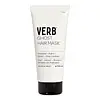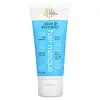What's inside
What's inside
 Key Ingredients
Key Ingredients

No key ingredients
 Benefits
Benefits

 Concerns
Concerns

 Ingredients Side-by-side
Ingredients Side-by-side

Water
Skin ConditioningDimethicone
EmollientStearyl Alcohol
EmollientCetyl Alcohol
EmollientGlycerin
HumectantCetyl Esters
EmollientBehentrimonium Chloride
PreservativeQuaternium-80
PEG-12 Dimethicone
Skin ConditioningStearamidopropyl Dimethylamine
EmulsifyingAmodimethicone
Isopropyl Myristate
EmollientMoringa Oleifera Seed Oil
EmollientPelvetia Canaliculata Extract
Skin ProtectingEthylhexylglycerin
Skin ConditioningCetrimonium Chloride
AntimicrobialTrideceth-12
EmulsifyingCitric Acid
BufferingIsopropyl Alcohol
SolventPEG-12 Allyl Ether
Parfum
MaskingXylitylglucoside
HumectantAnhydroxylitol
HumectantPolyquaternium-10
Polyquaternium-67
Maltitol
HumectantCaprylyl Glycol
EmollientPropylene Glycol
HumectantXylitol
HumectantMyristyl Alcohol
EmollientSodium Acetate
BufferingSodium Benzoate
MaskingChlorphenesin
AntimicrobialPhenoxyethanol
PreservativeHydroxycitronellal
PerfumingButylphenyl Methylpropional
PerfumingLimonene
PerfumingLinalool
PerfumingWater, Dimethicone, Stearyl Alcohol, Cetyl Alcohol, Glycerin, Cetyl Esters, Behentrimonium Chloride, Quaternium-80, PEG-12 Dimethicone, Stearamidopropyl Dimethylamine, Amodimethicone, Isopropyl Myristate, Moringa Oleifera Seed Oil, Pelvetia Canaliculata Extract, Ethylhexylglycerin, Cetrimonium Chloride, Trideceth-12, Citric Acid, Isopropyl Alcohol, PEG-12 Allyl Ether, Parfum, Xylitylglucoside, Anhydroxylitol, Polyquaternium-10, Polyquaternium-67, Maltitol, Caprylyl Glycol, Propylene Glycol, Xylitol, Myristyl Alcohol, Sodium Acetate, Sodium Benzoate, Chlorphenesin, Phenoxyethanol, Hydroxycitronellal, Butylphenyl Methylpropional, Limonene, Linalool
Water
Skin ConditioningCetearyl Alcohol
EmollientBehentrimonium Chloride
PreservativeAmodimethicone
Trideceth-12
EmulsifyingCetrimonium Chloride
AntimicrobialPanthenol
Skin ConditioningPersea Gratissima Oil
Skin ConditioningCocos Nucifera Oil
MaskingOlea Europaea Fruit Oil
MaskingHydrolyzed Silk
HumectantEthylhexylglycerin
Skin ConditioningCetyl Esters
EmollientCitric Acid
BufferingPotassium Sorbate
PreservativePhenoxyethanol
PreservativeParfum
MaskingIngredients Explained
These ingredients are found in both products.
Ingredients higher up in an ingredient list are typically present in a larger amount.
This water-soluble silicone is used for its hydrating and softening properties. It is used to add a silky feel to skincare products and has great benefits for haircare.
In haircare, this ingredient:
- Adds shine
- Protects color
- Offers thermal protection
- Boosts hair strength
- Does not build up as easily
This ingredient is a preservative and often used for it's anti-static properties. You'll most likely see this ingredient in hair conditioners.
It does not cause irritation or sensitization in leave-on products at 1-5%.
This ingredient is a preservative, antimicrobial, and emulsifier. It is often used in cosmetics for its ability to cleanse, condition, and reduce static.
Cetrimonium chloride is a quaternary ammonium salt, meaning it has a water-soluble structure.
Cetyl Esters is a synthetic wax made up of mostly fatty acids and fatty alcohols. It is strcturally similar to wax taken from whales.
As an emollient, it creates a thin barrier on the skin. This barrier prevents moisture from escaping.
This ingredient may not be fungal-acne safe.
Learn more about Cetyl EstersCitric Acid is an alpha hydroxy acid (AHA) naturally found in citrus fruits like oranges, lemons, and limes.
Like other AHAs, citric acid can exfoliate skin by breaking down the bonds that hold dead skin cells together. This helps reveal smoother and brighter skin underneath.
However, this exfoliating effect only happens at high concentrations (20%) which can be hard to find in cosmetic products.
Due to this, citric acid is usually included in small amounts as a pH adjuster. This helps keep products slightly more acidic and compatible with skin's natural pH.
In skincare formulas, citric acid can:
While it can provide some skin benefits, research shows lactic acid and glycolic acid are generally more effective and less irritating exfoliants.
Most citric acid used in skincare today is made by fermenting sugars (usually from molasses). This synthetic version is identical to the natural citrus form but easier to stabilize and use in formulations.
Read more about some other popular AHA's here:
Learn more about Citric AcidEthylhexylglycerin (we can't pronounce this either) is commonly used as a preservative and skin softener. It is derived from glyceryl.
You might see Ethylhexylglycerin often paired with other preservatives such as phenoxyethanol. Ethylhexylglycerin has been found to increase the effectiveness of these other preservatives.
Parfum is a catch-all term for an ingredient or more that is used to give a scent to products.
Also called "fragrance", this ingredient can be a blend of hundreds of chemicals or plant oils. This means every product with "fragrance" or "parfum" in the ingredients list is a different mixture.
For instance, Habanolide is a proprietary trade name for a specific aroma chemical. When used as a fragrance ingredient in cosmetics, most aroma chemicals fall under the broad labeling category of “FRAGRANCE” or “PARFUM” according to EU and US regulations.
The term 'parfum' or 'fragrance' is not regulated in many countries. In many cases, it is up to the brand to define this term.
For instance, many brands choose to label themselves as "fragrance-free" because they are not using synthetic fragrances. However, their products may still contain ingredients such as essential oils that are considered a fragrance by INCI standards.
One example is Calendula flower extract. Calendula is an essential oil that still imparts a scent or 'fragrance'.
Depending on the blend, the ingredients in the mixture can cause allergies and sensitivities on the skin. Some ingredients that are known EU allergens include linalool and citronellol.
Parfum can also be used to mask or cover an unpleasant scent.
The bottom line is: not all fragrances/parfum/ingredients are created equally. If you are worried about fragrances, we recommend taking a closer look at an ingredient. And of course, we always recommend speaking with a professional.
Learn more about ParfumPhenoxyethanol is a preservative that has germicide, antimicrobial, and aromatic properties. Studies show that phenoxyethanol can prevent microbial growth. By itself, it has a scent that is similar to that of a rose.
It's often used in formulations along with Caprylyl Glycol to preserve the shelf life of products.
We don't have a description for Trideceth-12 yet.
Water. It's the most common cosmetic ingredient of all. You'll usually see it at the top of ingredient lists, meaning that it makes up the largest part of the product.
So why is it so popular? Water most often acts as a solvent - this means that it helps dissolve other ingredients into the formulation.
You'll also recognize water as that liquid we all need to stay alive. If you see this, drink a glass of water. Stay hydrated!
Learn more about Water